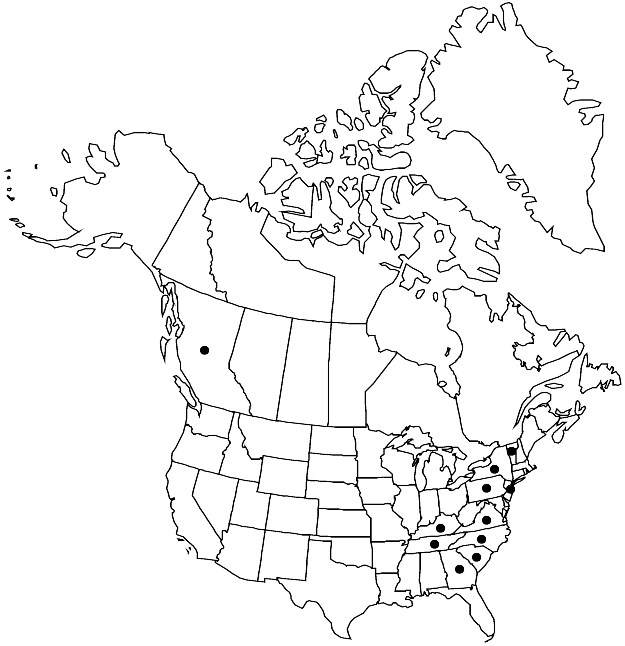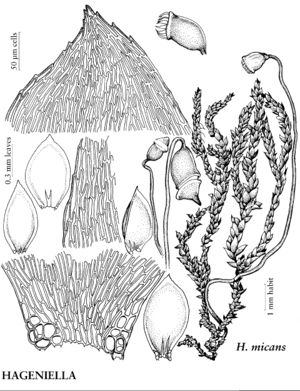Difference between revisions of "Hageniella micans"
J. Hattori Bot. Lab. 86: 37. 1999.
imported>Volume Importer |
imported>Volume Importer |
||
| Line 68: | Line 68: | ||
|publication year=1999 | |publication year=1999 | ||
|special status=Illustrated | |special status=Illustrated | ||
| − | |source xml=https:// | + | |source xml=https://bitbucket.org/aafc-mbb/fna-data-curation/src/2e0870ddd59836b60bcf96646a41e87ea5a5943a/coarse_grained_fna_xml/V28/V28_900.xml |
|genus=Hageniella | |genus=Hageniella | ||
|species=Hageniella micans | |species=Hageniella micans | ||
Latest revision as of 21:38, 5 November 2020
Plants in dense, shallow, creeping mats. Stems with shoots facing downward; pseudoparaphyllia narrowly foliose. Leaves concave, 0.2–0.5 mm; base curved to insertion, somewhat decurrent; supra-alar cells rectangular, smaller than alar cells. Seta red-brown. Capsule asymmetric, slightly curved, 0.5–1 mm; exostome teeth bordered, cross striolate basally, papillose distally; endostome basal membrane high, segments nearly same length as exostome teeth, cilia in groups of 2.
Phenology: Capsules mature early winter.
Habitat: Rock, usually somewhat shaded, near streams
Elevation: low to moderate elevations
Distribution

B.C., Ga., Ky., N.J., N.Y., N.C., Pa., S.C., Tenn., Vt., Va., Mexico, Central America (Honduras), Europe, Asia (Borneo, sw China, India, Sikkim), Pacific Islands (Hawaii, Philippines).
Discussion
As shown in the synonymy, Hageniella micans has been baffling in its generic and familial placement. Specimens from Mexico and British Columbia tend to be larger than those from eastern North America. The habitat of H. micans resembles that of many species of Hygrohypnum, but it is not aquatic. Vegetatively, the species strongly resembles Sematophyllum, but Hageniella may be distinguished by the capsule shrinking below the mouth when mature, whether operculate or inoperculate. Also, the exothecial cells of the somewhat similar Brotherella are collenchymatous, while in Hageniella the walls are thickened but not collenchymatous.
Selected References
None.
